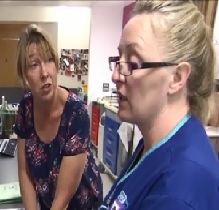Transmission risks
Modes of transmission
- The most common ways that people become infected with HIV are:
- Through having unprotected penetrative sexual intercourse with an HIV positive partner
- Through injecting drugs, using an unsterilised needle or syringe that has been used by someone who is HIV positive
- As a baby of an untreated HIV positive mother, during pregnancy, labour or delivery, or through breastfeeding
- Only specific fluids (blood, semen, vaginal secretions, and breast milk containing a sufficiently high viral load) from an HIV-positive person can transmit HIV. These specific fluids must come in contact with a mucous membrane or damaged tissue or be directly injected into the blood-stream (from a needle or syringe) for transmission to possibly occur
The importance of viral load
Viral load is a key influencing factor in risk of HIV transmission. Essentially an undetectable viral load (suppressed by treatment) makes the risk of onward transmission negligible. Let’s look at a few examples - roll the mouse over the images below to read in more detail about the risk of onward transmission to children, partners and healthcare professionals.

Transmission from mother to baby
- Mother To Child Transmission (MTCT) is also known as perinatal or vertical transmission of HIV
- MTCT may occur:
- before, during or after birth
- if the baby is exposed to the mother’s infected blood or body fluids during pregnancy, delivery or through breastfeeding
- if the mother has a high Viral Load (VL) or low CD4 count or has AIDS illnesses
- Where the woman is untreated the risk of passing the virus to the baby is about 25%, if she breastfeeds her baby there is an additional 12% chance of transmission
- However, with effective treatment the risk of MTCT is reduced to <1%

Transmission to partners
In 2013, BHIVA and the Expert Advisory Group on AIDS (EAGA) produced a position statement on the evidence of treatment as prevention:
“There is now conclusive randomised clinical trial evidence, from heterosexual couples where one partner has HIV and the other does not, that if the partner who is HIV positive is taking effective ART, transmission of HIV through vaginal sex is significantly reduced (by 96%). The observed reduction in HIV transmission in a clinical trial setting demonstrates that successful ART taken by the person who is HIV positive is as effective as consistent condom use in limiting viral transmission.” (position statement, BHIVA and EAGA, 2013)
‘Undetectable equals Untransmissible’ U = U
More recently, there is growing endorsement for the ‘U = U consensus statement produced by the Prevention Access Campaign. BHIVA Chair, Professor Chloe Orkin, has said: “As the UK’s leading voice for HIV health professionals, our backing for U=U is unequivocal. There should be no doubt about the clear and simple message that a person with sustained, undetectable levels of HIV virus in their blood cannot transmit HIV to their sexual partners.
“This fact is a testament to the preventive impact of effective HIV treatment and highlights the need to maximise access to treatment in order to minimise and ultimately eradicate HIV transmission. Spreading the U=U message is also an important way to help reduce the stigma experienced by people living with HIV, whose sexual partners may fear infection unnecessarily.”
The U=U statement is based on evidence from the PARTNER study (published in the Journal of the American Medical Association, 12 July 2016) which reported that the risk of HIV transmission with effective treatment is negligible. This statement is particularly relevant to help sero different couples wishing to conceive about the level of risk involved in having unprotected sex while the positive partner is taking antiretroviral therapy.

Transmission to healthcare workers
- The risk of health care workers being exposed to HIV at work is very low. The main risk of HIV transmission is through accidental injuries from needles and other sharp instruments that may be contaminated with the virus; however, even this risk is small
- In the event of exposure to HIV through work refer to Occupational Health departments who will follow local policies for testing and Post Exposure Prophylaxis (PEP)
- Prevention: Standard universal precautions as with any other patient

